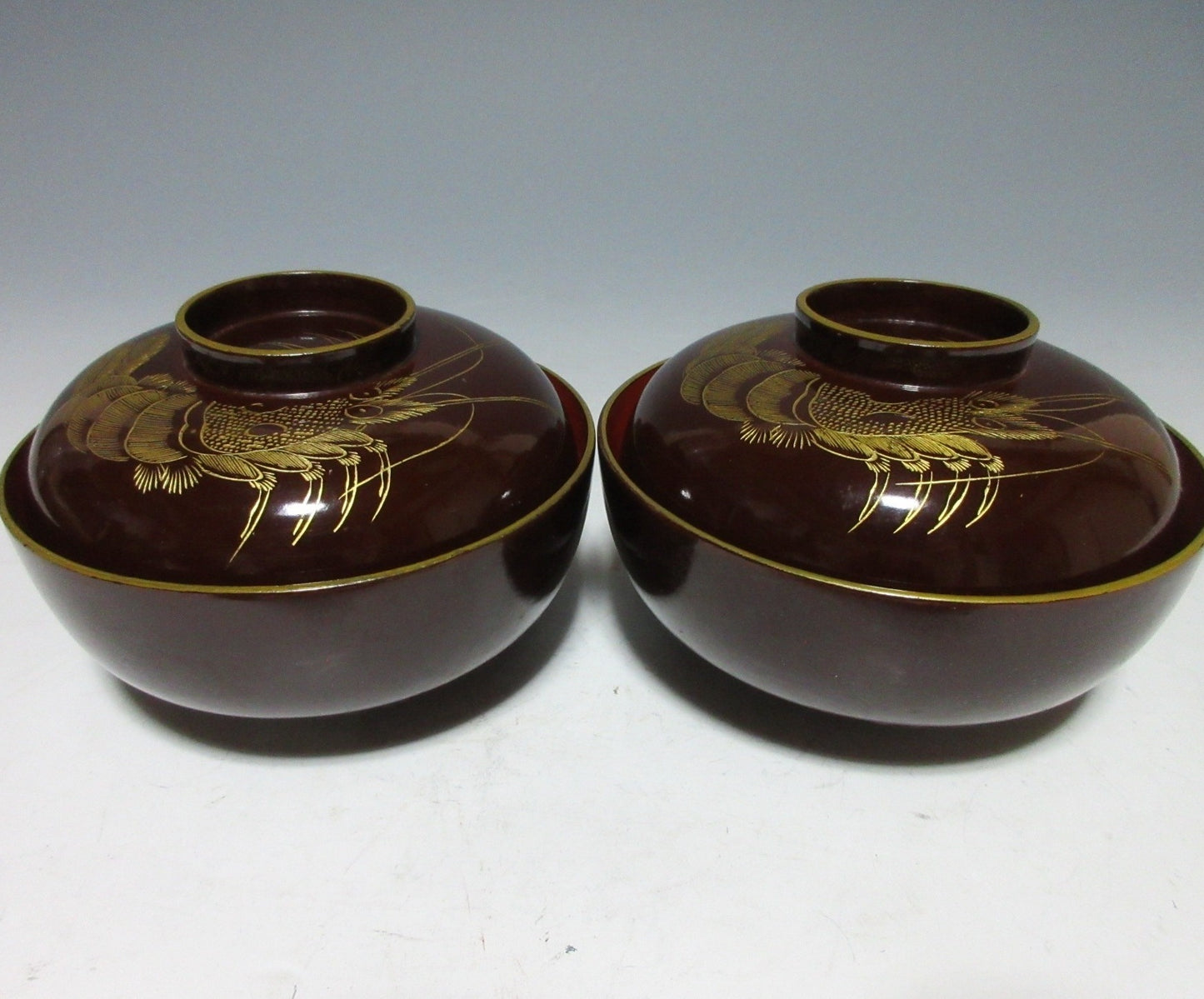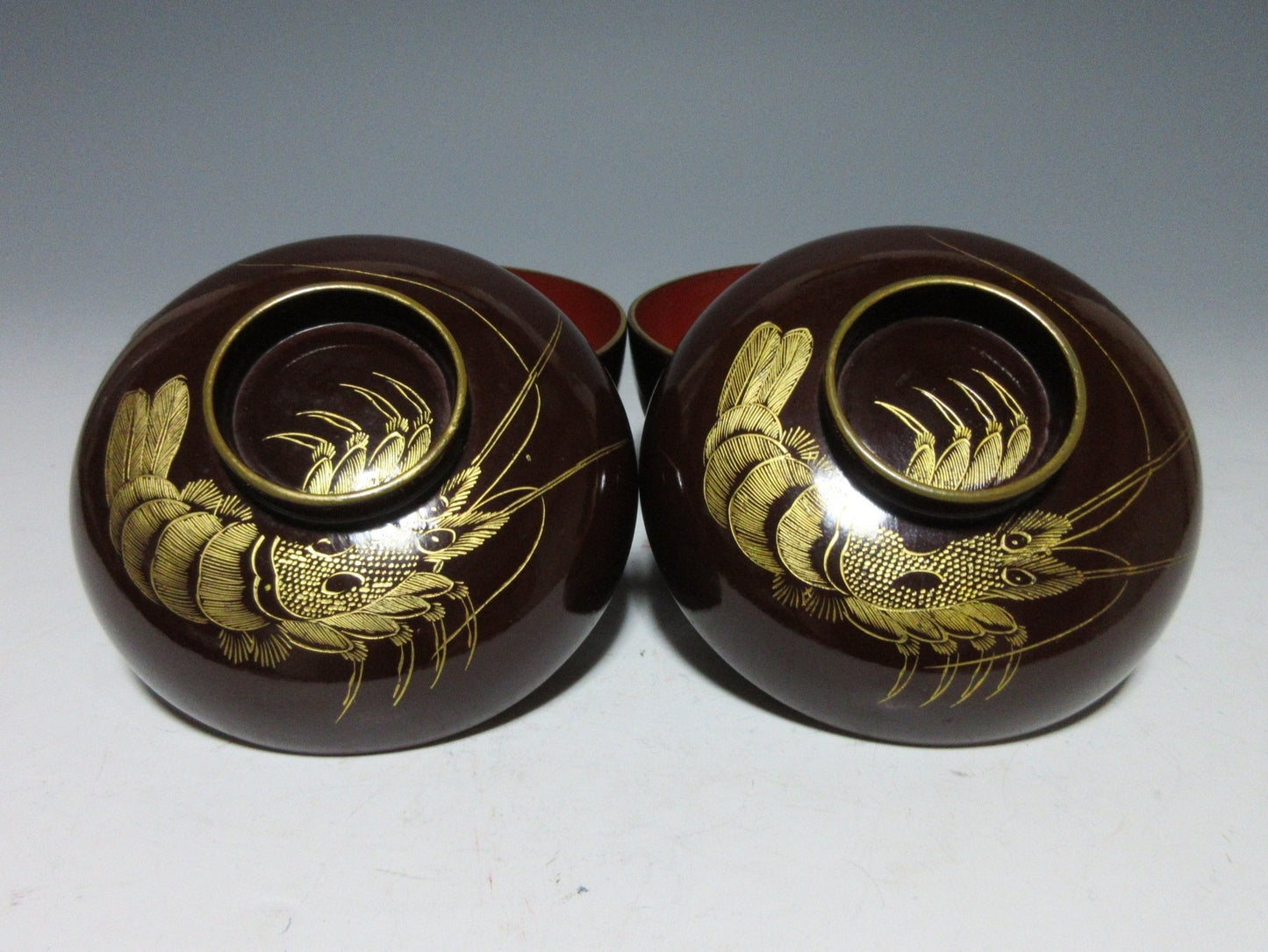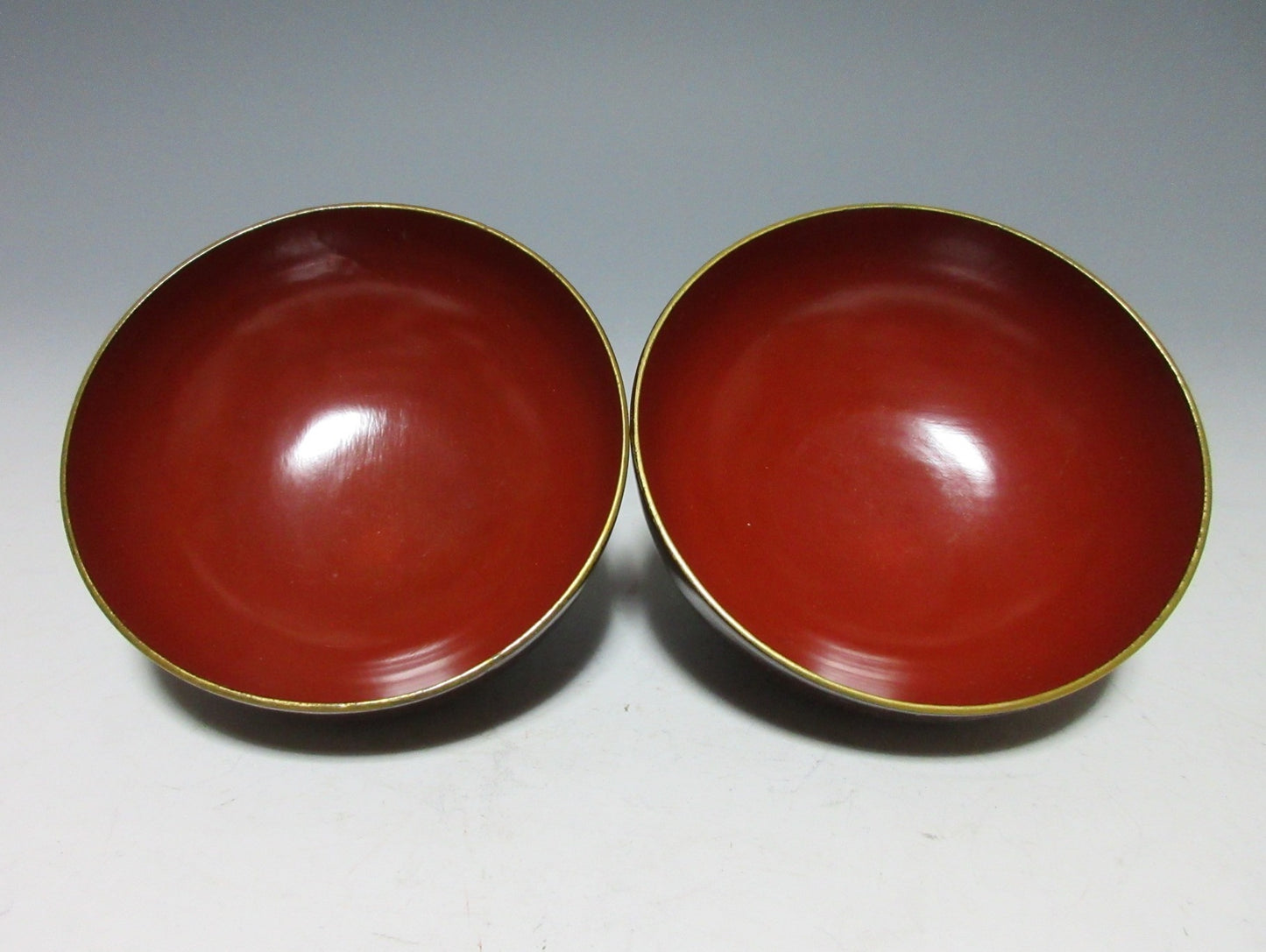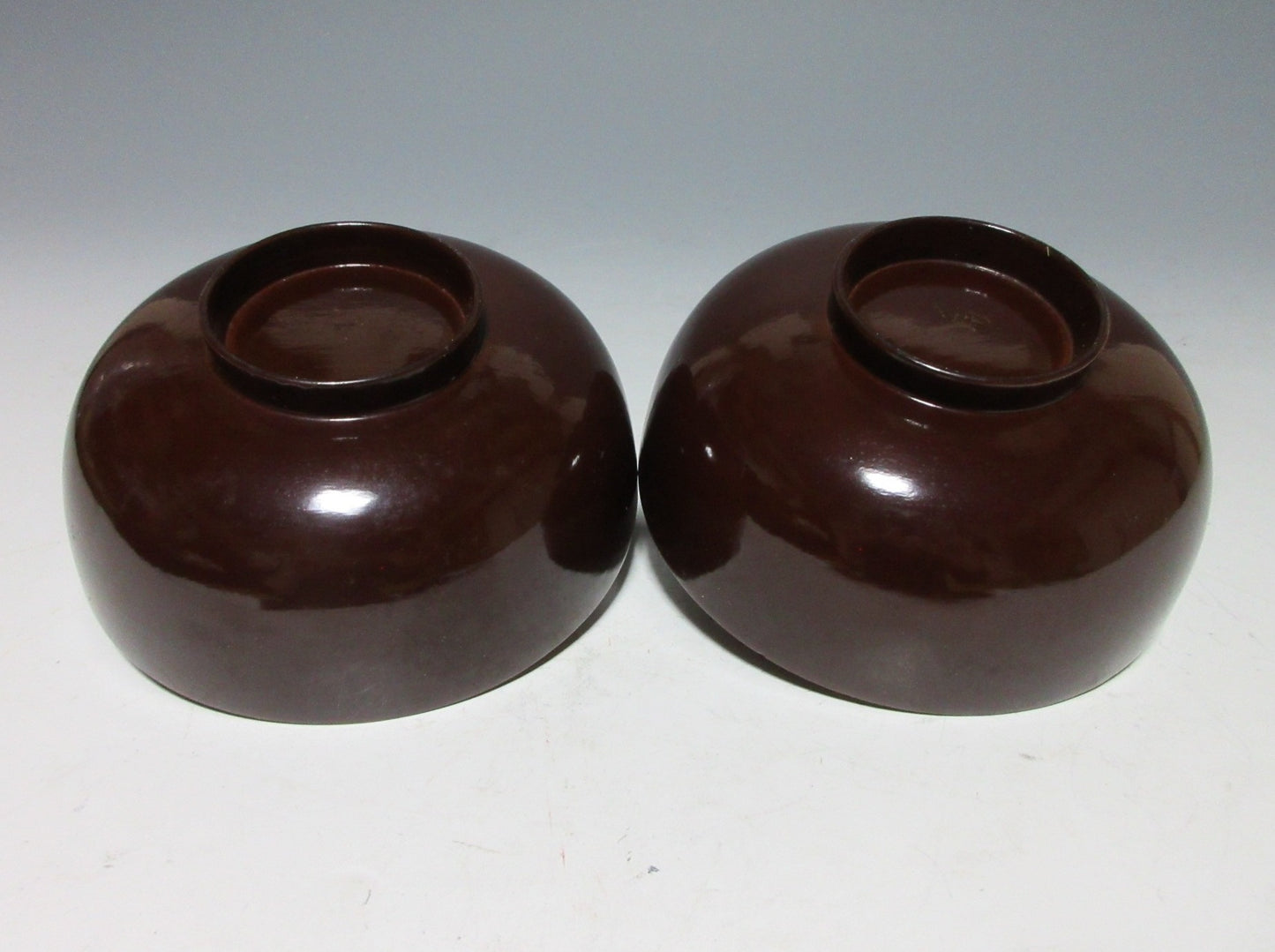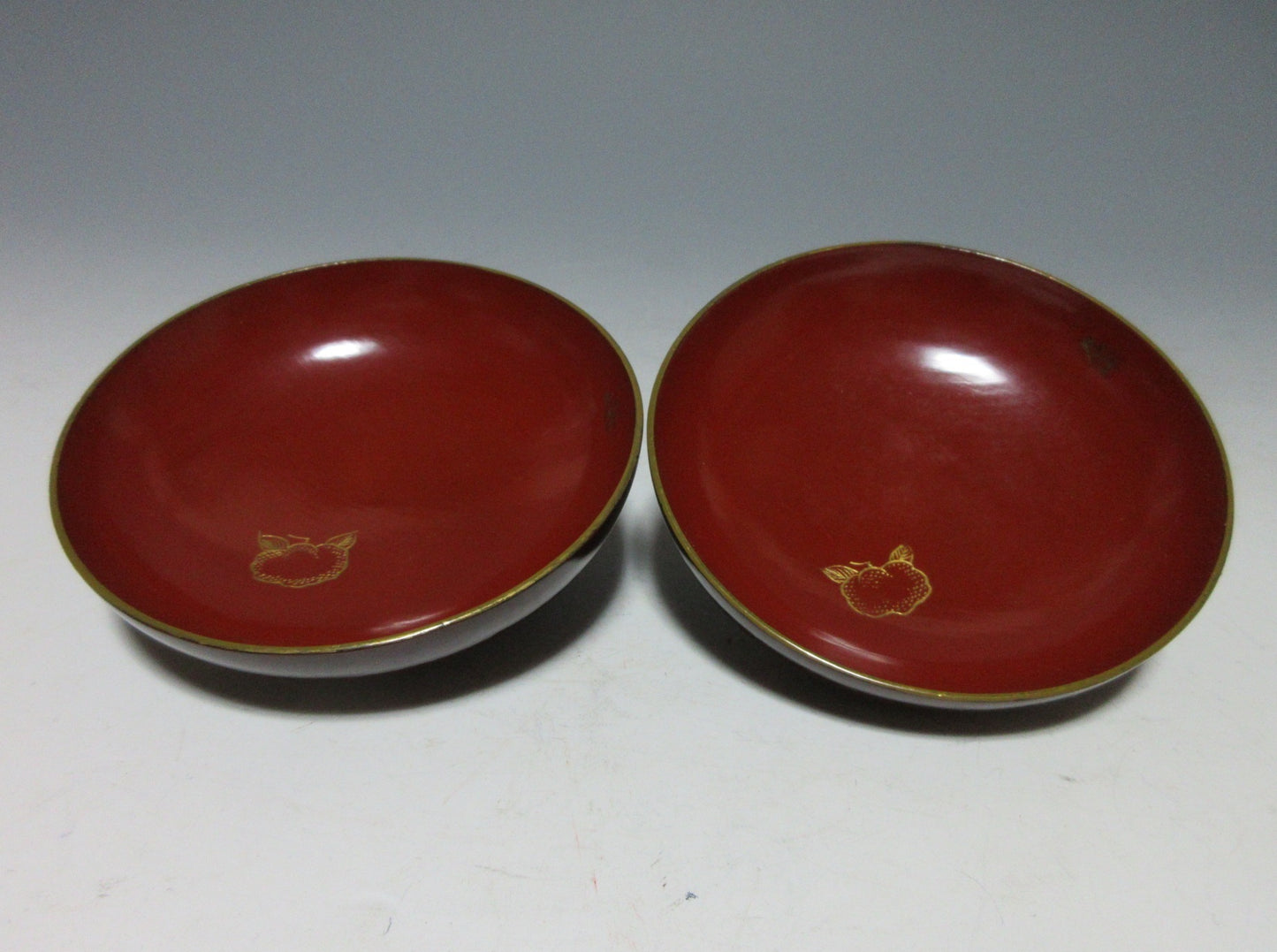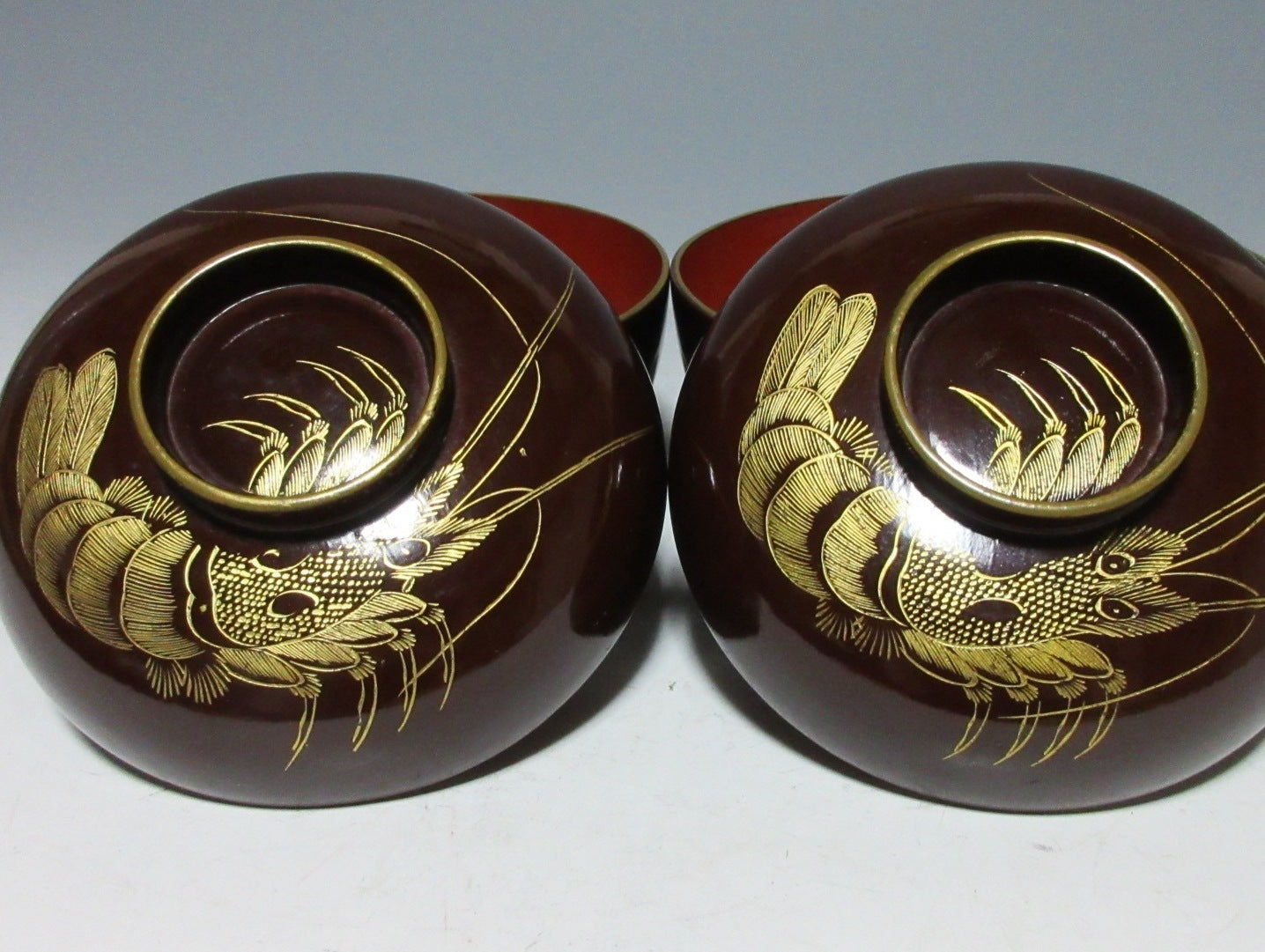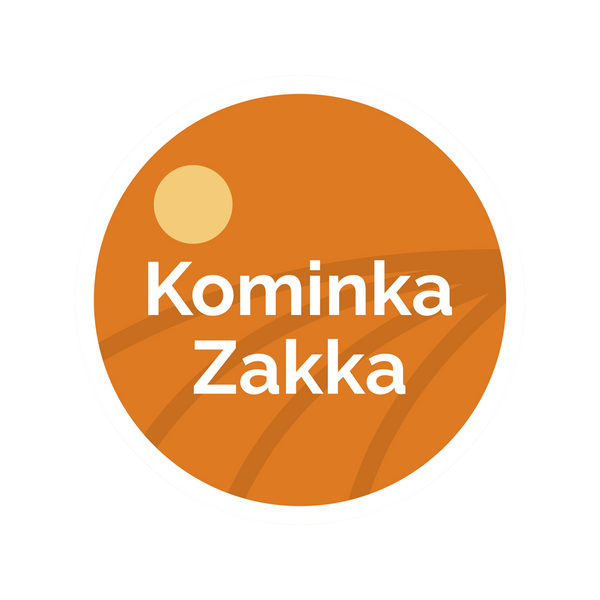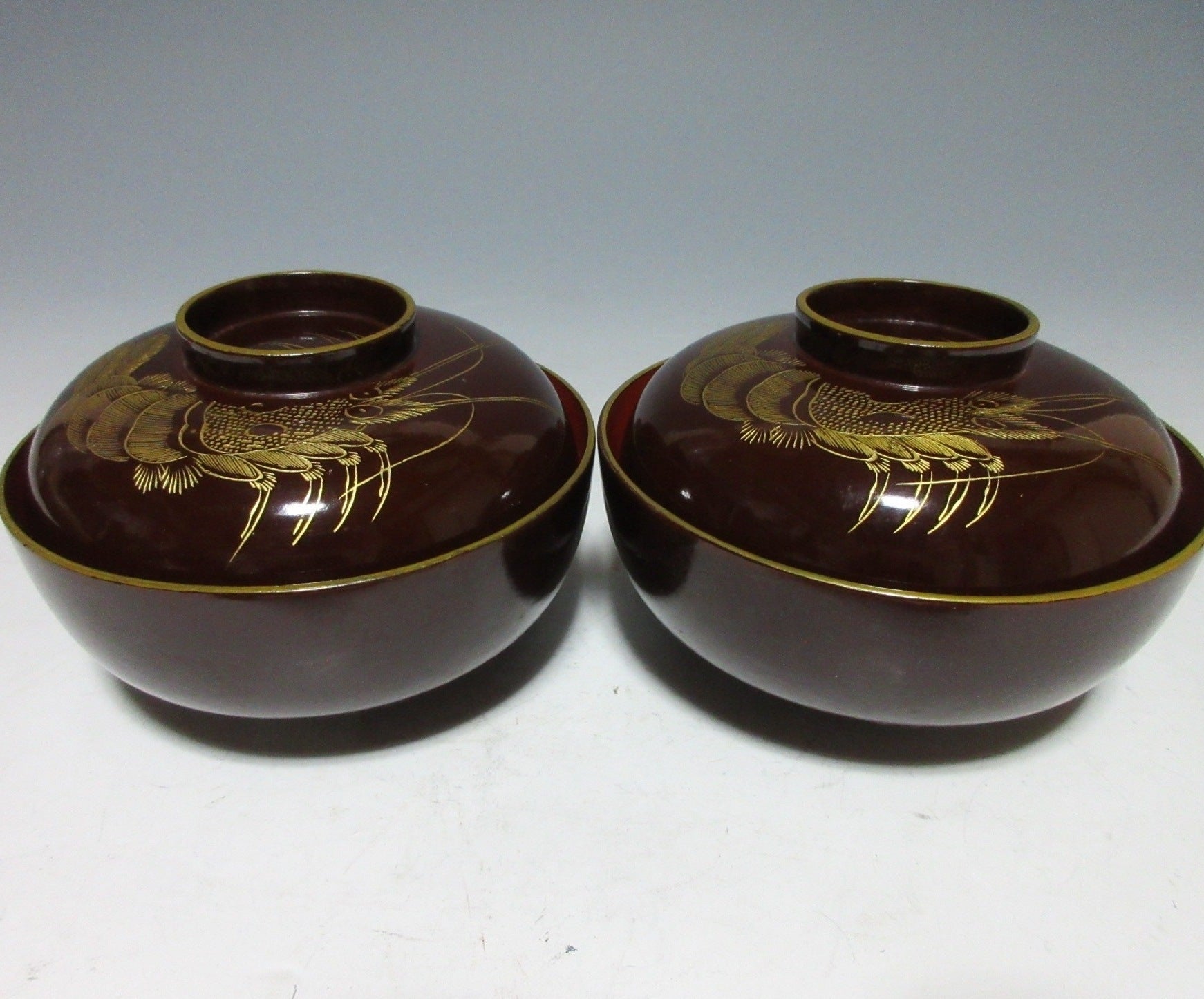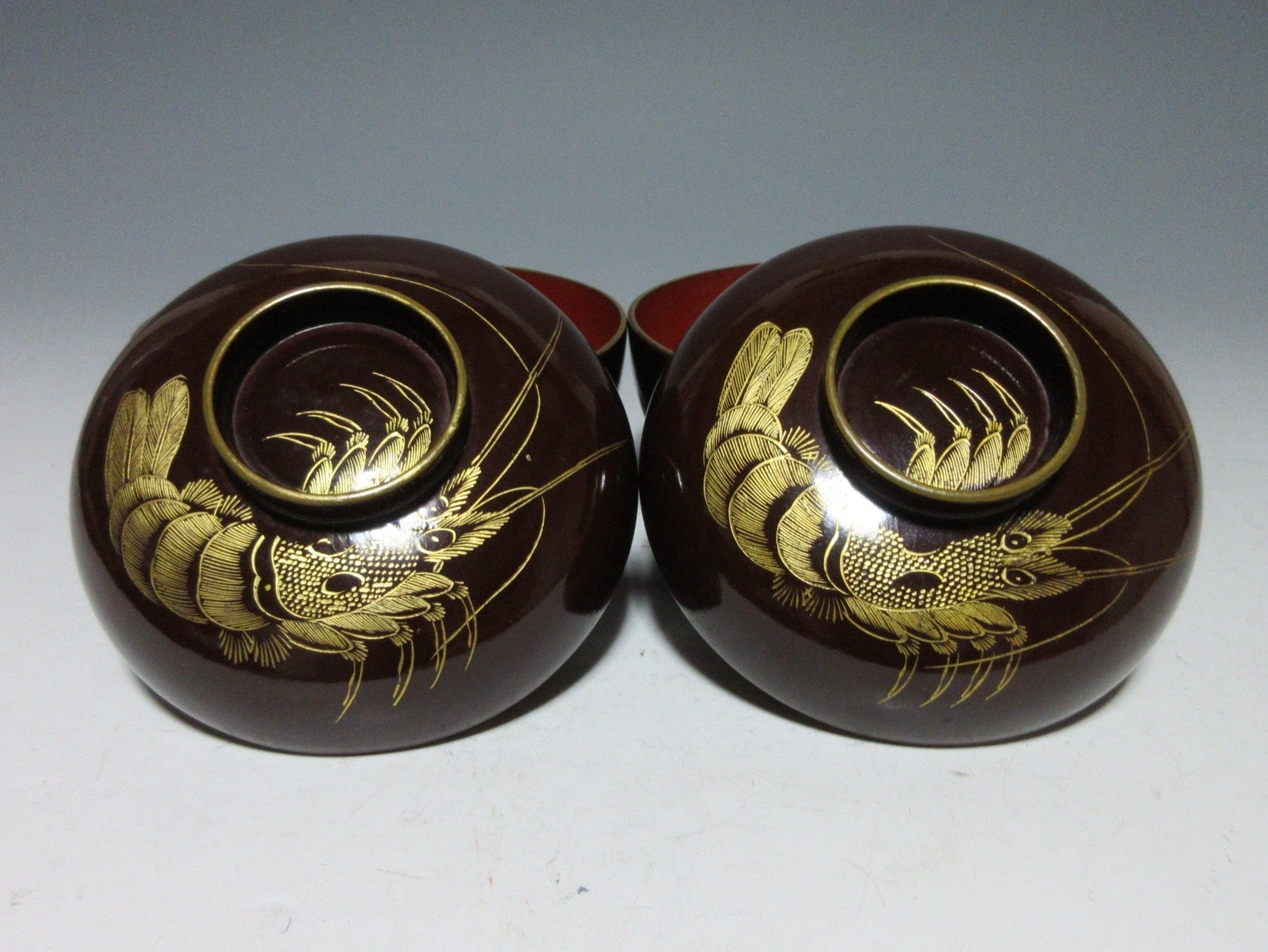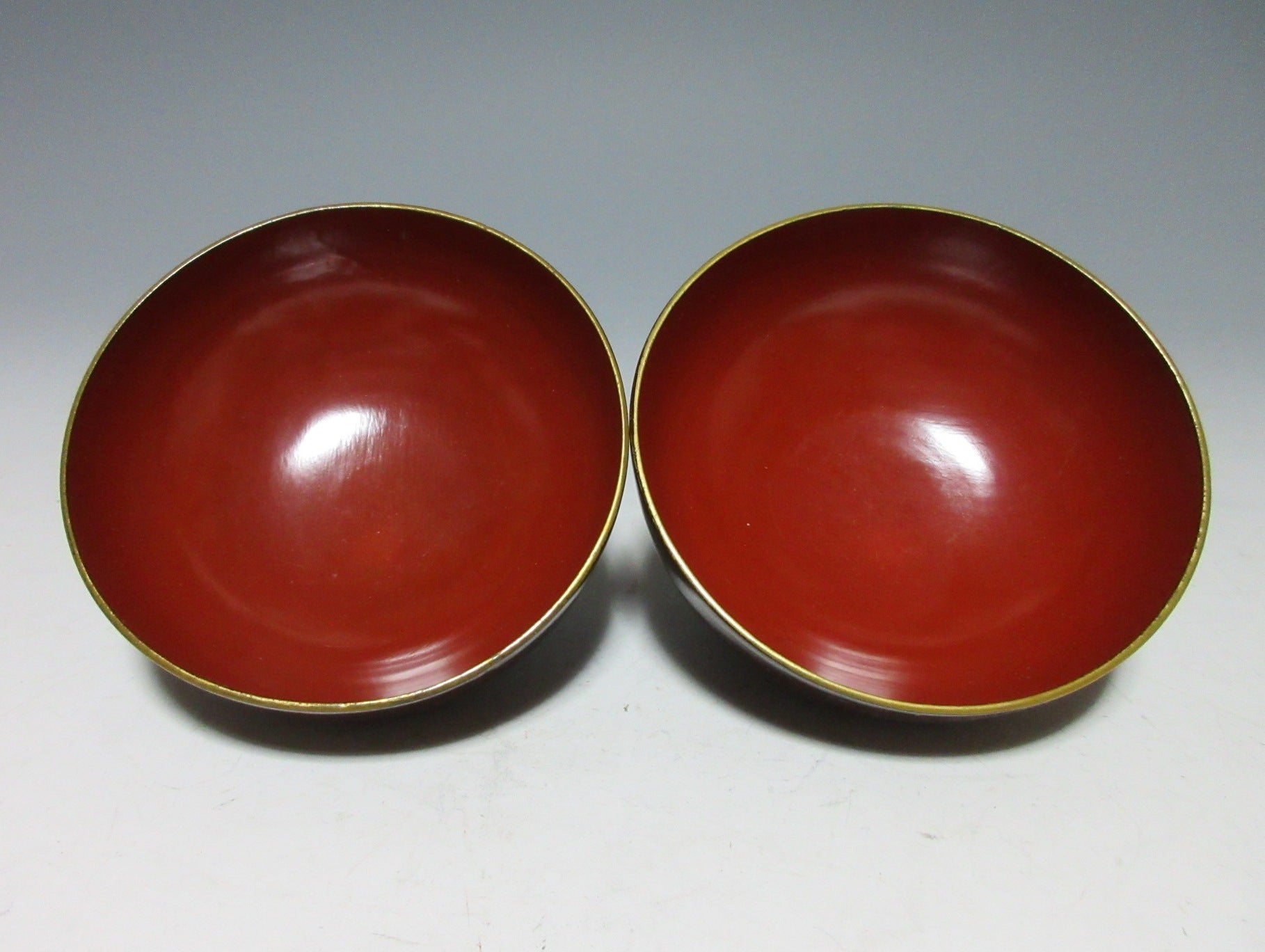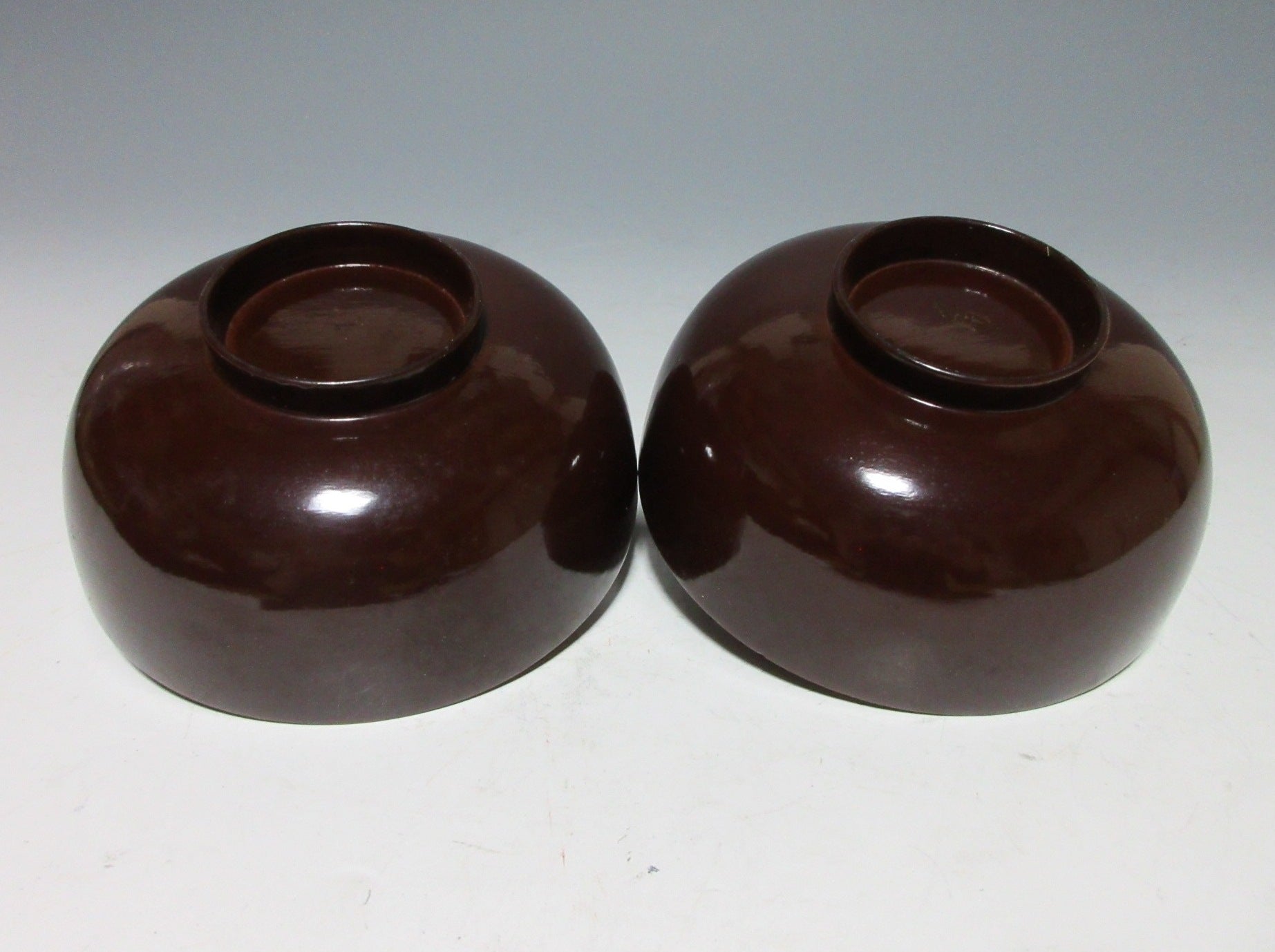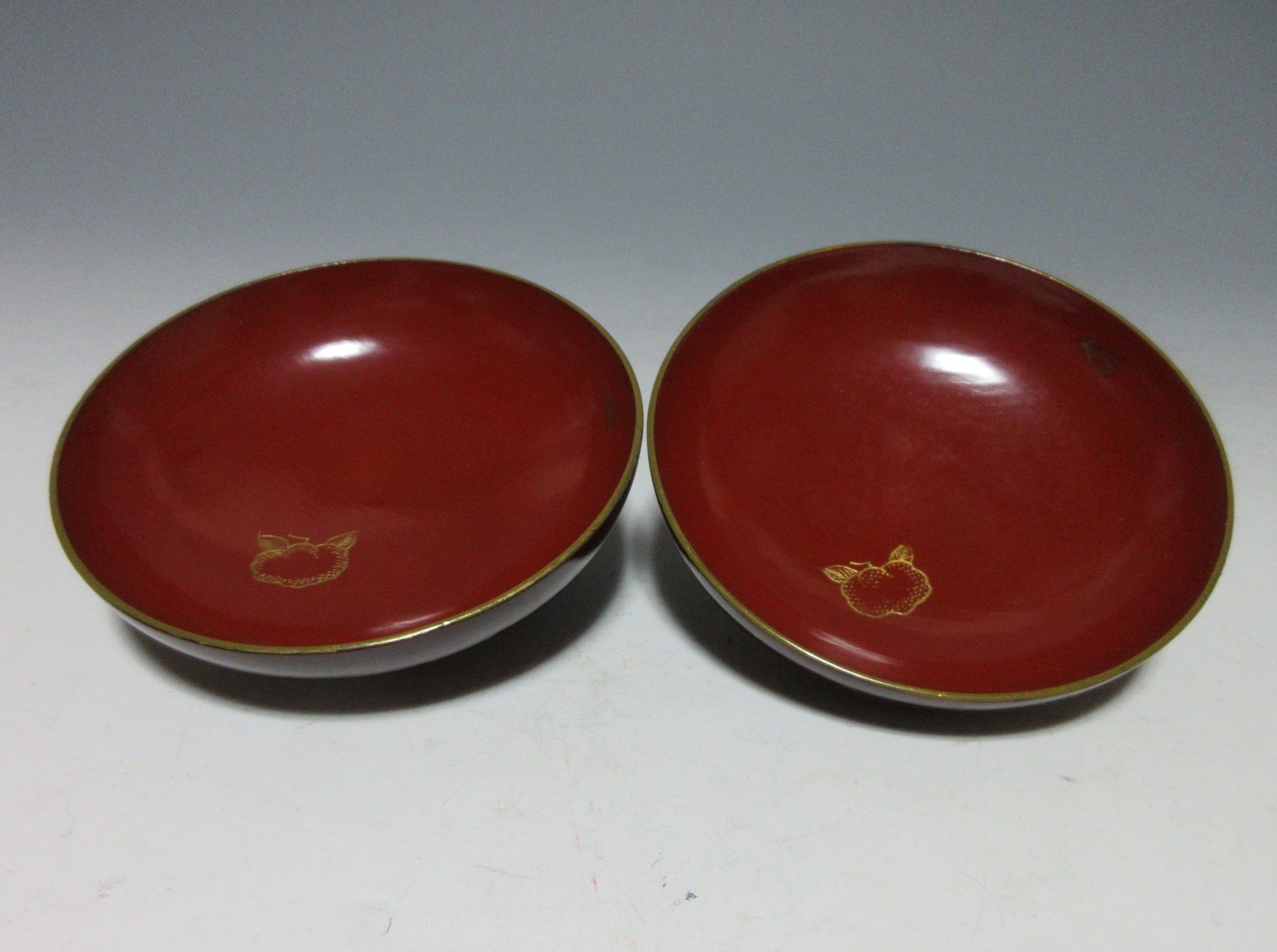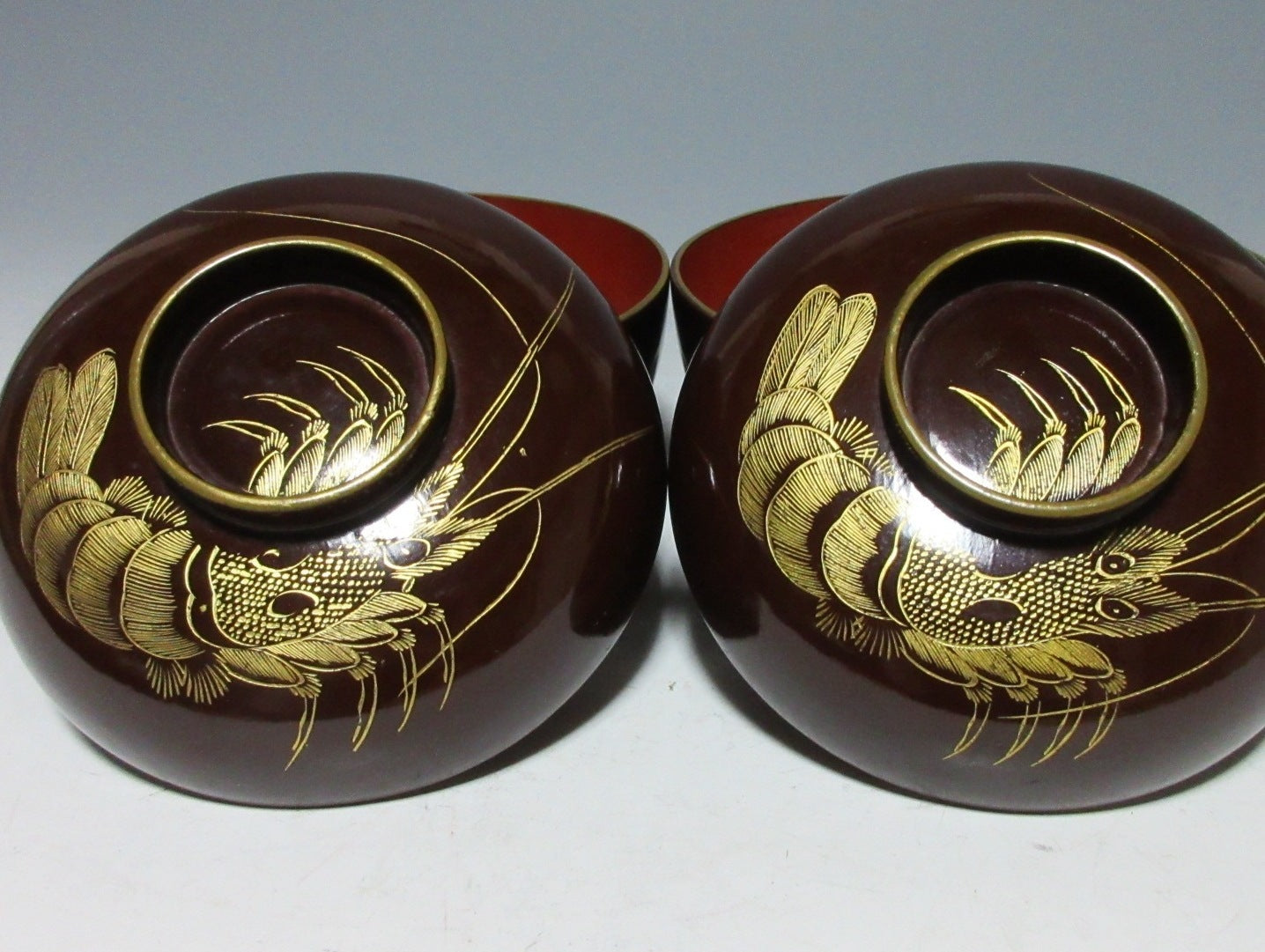Kominka Zakka
Wajima-nuri Ise Ebi Bowls
Wajima-nuri Ise Ebi Bowls
Couldn't load pickup availability
*SHIPPING OPTIONS VARY DEPENDING ON THE DESTINATION, PLEASE SCROLL TO THE END OF THIS LISTING FOR MORE DETAILS.
This listing is for a pair of Wajima urushi lacquerware bowls made around 60 years ago. They are coated in dark brown coloured lacquer, and the lids are decorated with an ise spiny lobster. Both bowls are made of wood, and the lobster motif was created using the makie technique. Ise ebi are regarded as auspicious and symbolize longevity, and this is because the back of a lobster is curled just like an elderly person. For this reason Ise ebi themed tableware and teaware are very popular during the New Year season.
Wajima nuri refers to lacquerware produced in Ishikawa Prefecture. The process of applying the lacquer is very complex, and there are as many as 124 steps involved. A finely powdered mineral called jinoko is used for the undercoating making it highly resistant and strong. Each piece has up to 8 layers of lacquer, this is the main reason why Wajima lacquerware is widely known throughout Japan for its high quality and durability. Wajima lacquerware commands high prices so purchases are usually reserved for special occasions such as weddings and anniversaries.
Urushi lacquerware refers to products that have been coated in natural lacquer collected from urushi trees. The process for lacquering items is long and very labour intensive, each item requiring multiple layers of lacquer that may take anywhere from six months to two years to complete. Heat and humidity are required to dry lacquer evenly and consistently, so Japan’s rainy season and summer months are ideal for this process. Urushi products are not only beautiful but also strong.
Makie refers to a crafting technique in Japan from presumably the Nara period. Craftsmen sprinkle gold or silver metal powder over successive layers of lacquer before it dries. Traditionally pure gold powder, pure gold flakes, and pure silver powder were used to complete motifs on lacquerware. The process of applying gold or silver powder requires both time and skill. At first the craftsman sketches out the design. He or she then adds charcoal powder to the base of the relief, and then a layer of urushi lacquer. Gold or silver powder is sprinkled over the wet lacquer, which acts as an adhesive. The surface is polished and then the process is repeated over and over until a beautiful raised pattern appears.
Size
H.7.3cm (2.8”) x Dia.12.2cm (4.8”) x 11.3cm (4.4”) diameter lid
Condition
Overall they’re both in pretty good condition aside from some light scuffing under the lid of both bowls, and some on the top of the lids as well. There’s very little wear on the interior, but slight scuffing (or cloudiness) on the exterior.
THESE ARE SHIPPING ESTIMATES BASED ON THE CURRENT GLOBAL SITUATION
**Germany, France, Greece, Spain, Poland, Austria, Slovakia, Lithuania, Slovenia: NO SHIPPING. Very strict and expensive packaging laws in place and we are not licensed to send products to these countries. We have no plan to register at this time because the process is in some cases very expensive and complicated, plus each country has its own set of regulations and application process.
**USA, UK, Canada, Australia, New Zealand, Switzerland, Norway: Airmail Small Packet (approx. 15-28 days). Combined shipping available up to 2kgs for Airmail Small Packet (please send us a message).
**Asia: Airmail Small Packet (approx. 15-21 days). Combined shipping available up to 2kgs for Airmail Small Packet (please send us a message).
**Central Asia, Middle East, South Africa, Brazil, Mexico: EMS Express 10-15 days.
**Russia: No shipping methods available.
Share
